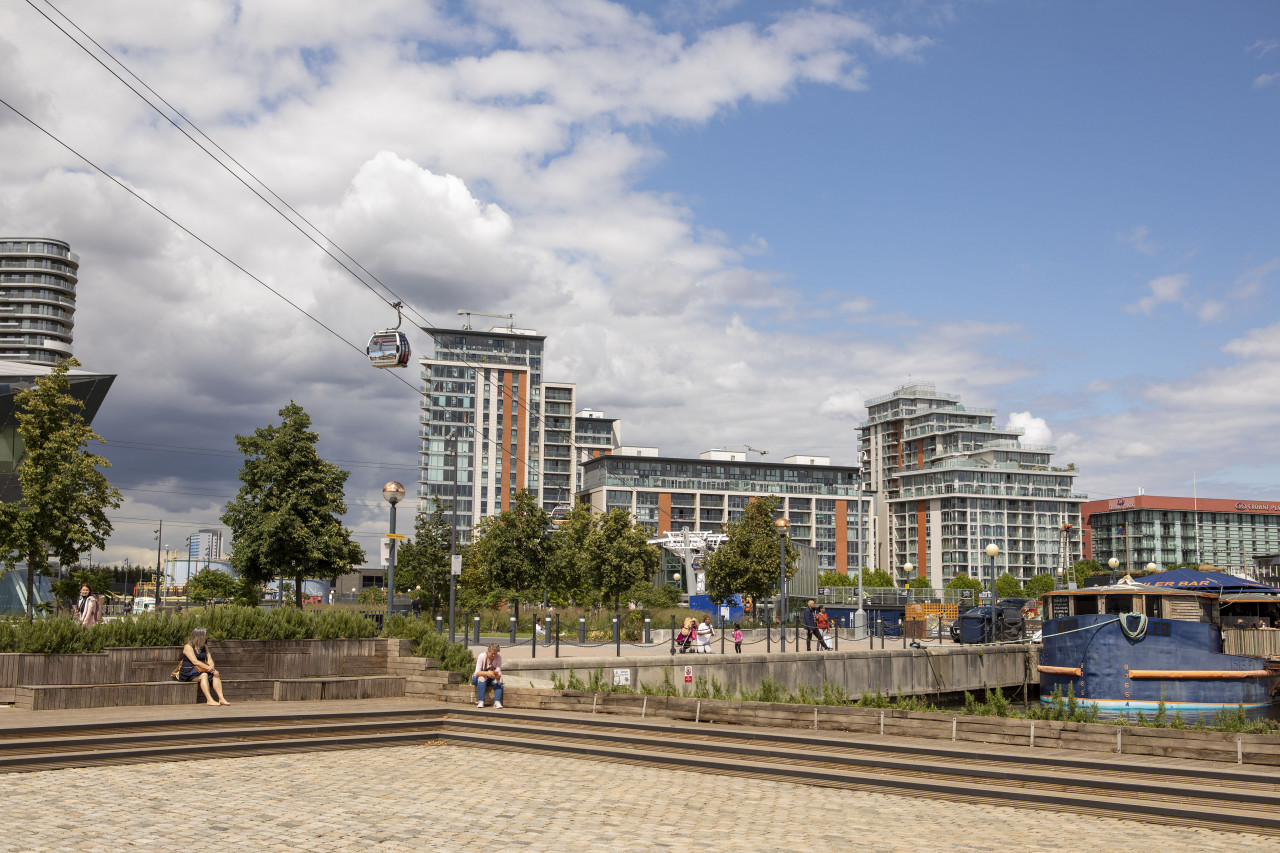Financial institutions will achieve greater impact if they focus on so-called place-based impact investing in regional regeneration, instead of lending to certain sectors.

That’s according to the report “Building Strong Places: a new, impactful role for financial institutions,” which was written by the Impact Investing Institute and Metro Dynamics for Lloyds Banking Group, all of whom are based in the UK.
The report looked into how financial institutions can engage in place-based impact investing (PBII), particularly in light of the transition to net zero and the economic fallout from the Covid-19 pandemic.
The relationship between a financial institution and a place lies at the heart of PBBI, the report said. The report’s authors worked with the cities of Birmingham, Leeds and Liverpool to explore how this approach may work in practice.
PBII, through which financial institutions can partner with places to facilitate regeneration and sustainable growth through long-term relationships, has been highly successful in the US.
For example, ShoreBank in Chicago made $4.1bn (€3.6bn) in investments and financed more than 59,000 affordable homes, mainly in low-income communities, since it was founded as a community lender in 1973 with just a few hundred thousand dollars.
Focus on local needs instead of ad-hoc transactions
PBII challenges traditional ways of working in mainstream lending, according to Chris Sood-Nicholls, managing director, ESG & Regional Regeneration at Lloyds Banking Group.
“There is a need for financial institutions to change,” Sood-Nicholls told a virtual panel hosted by the Impact Investing Institute in Birmingham, England last week.
Financial institutions “tend to be big, quite uncoordinated, quite siloed companies,” with various teams of specialists working independently from each other on large-ticket lending to different sectors, such as housing or infrastructure.
“When was the last time we got those teams together, if ever, to convene a conversation with regional leaders about the needs of the place, rather than financing ad-hoc transactions that make a small impact in a place, but cumulatively don’t respect the ambitions of the place?,” said Sood-Nicholls.
High levels of inequality
“That’s where I think all financial institutions have got to change. We’re just starting on that journey,” he said.
“But I think the power of this opportunity will come together when more financial institutions follow this path by having broader conversations around the needs of a place and how we can magnify our contributions accordingly.”
Although the UK is the world’s fifth-biggest economy by Gross Domestic Product, it has some of the highest levels of sustained inequality in Europe.
Numerous British governments have unsuccessfully tried to address these regional imbalances. The current UK government, led by Prime Minister Boris Johnson, has set out a policy aimed at ‘levelling up’ Britain’s towns and places by addressing inequalities and creating opportunities for growth in all parts of the country.
“Fundamentally, regeneration is not about property, it’s about people in communities,” Mark Bousfield, director of Regeneration and Economy at Liverpool City Council, told the panel.
‘No shortage of capital’ for regeneration
Closing the wealth gap between the north and south of the UK will need investment of around £2tn (€2.4tn), or roughly the cost of the reunification of Germany after the fall of the Berlin Wall, according to UK think tank Centre for Cities.
With the UK economy struggling to recover from both Brexit and the pandemic, where is the money going to come from?
“There is no shortage of capital to invest,” in the regeneration of places which have been underinvested traditionally, Sarah Gordon, chief executive officer of the Impact Investing Institute, told the panel.
“It really is about facilitating that capital to flow to the places where it is most needed.”
Research conducted earlier this year by the Impact Investing Institute and The Good Economy found that only 1% of the assets of the £326bn (€382bn) Local Government Pension Scheme could be identified as place-based investments.
“If just 5% of those assets under management were going into local places, that would represent £16bn,” said Gordon.
“We know there is a lack of money in the public purse…but there is all this institutional capital, which can be facilitated into a positive impact in the places in the UK and internationally that need it.”
Report’s recommendations
The report identified housing, SME finance, clean energy, infrastructure, physical regeneration and social infrastructure as key sectors capable of delivering risk-adjusted market returns while addressing the needs of places.
It also called for the government to take an active role in catalysing private sector capital by “facilitating policy change, regulatory encouragement and funding to de-risk and incentivise PBII.”
To realise PBII’s potential, banks need to dedicate money and staff to the approach, focus on a select number of PBII relationships and create products and approaches which enable places and investors to form partnerships.
And finally, the UK’s cities and towns should set out clear development priorities and goals and connect investment with community needs, the report recommended.
“Financial institutions can create new markets for commercially viable investment that generate social benefits, while places gain access to previously untapped capital to fund transformational regeneration without over-reliance on grants,” the report concluded.





